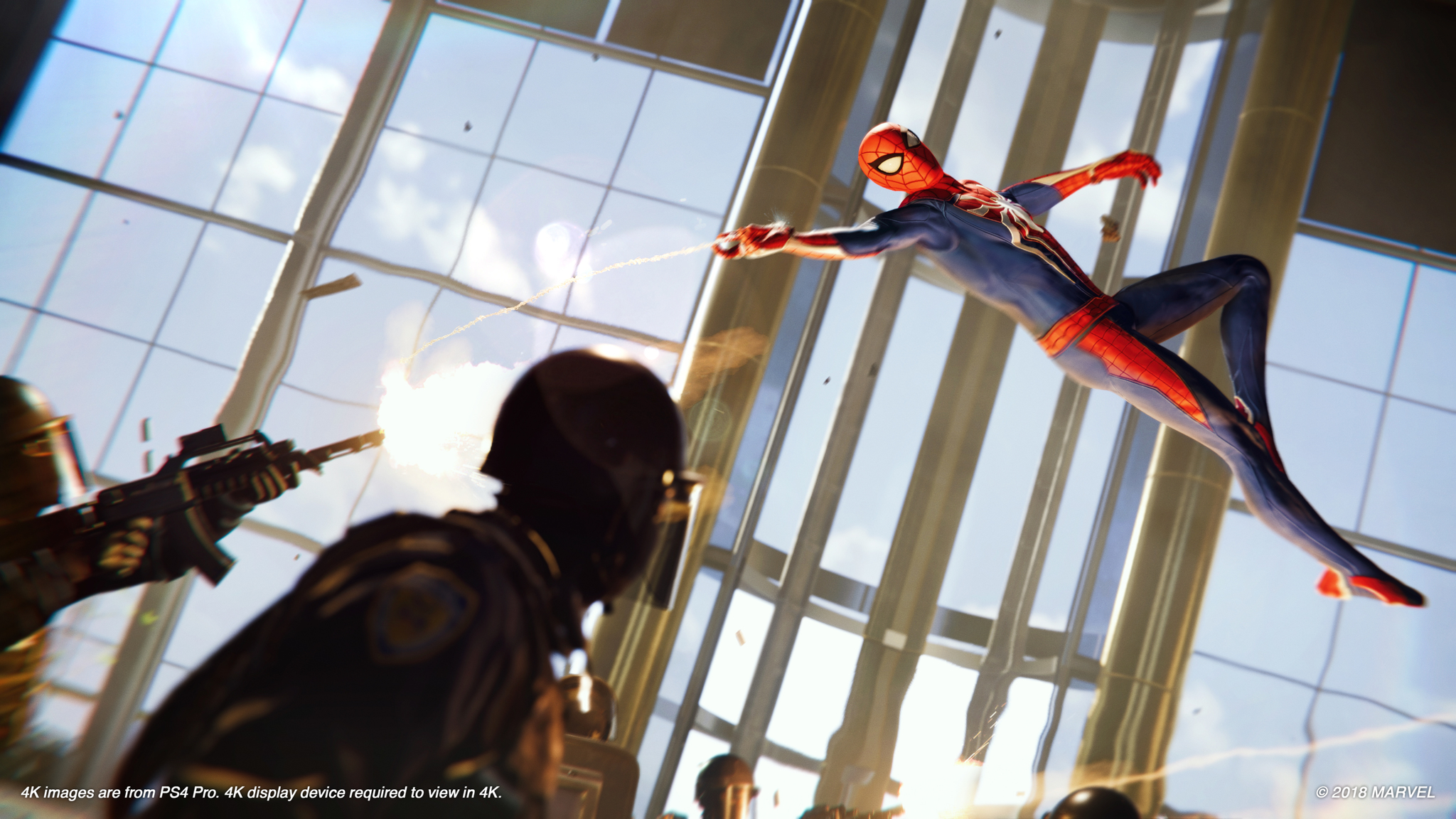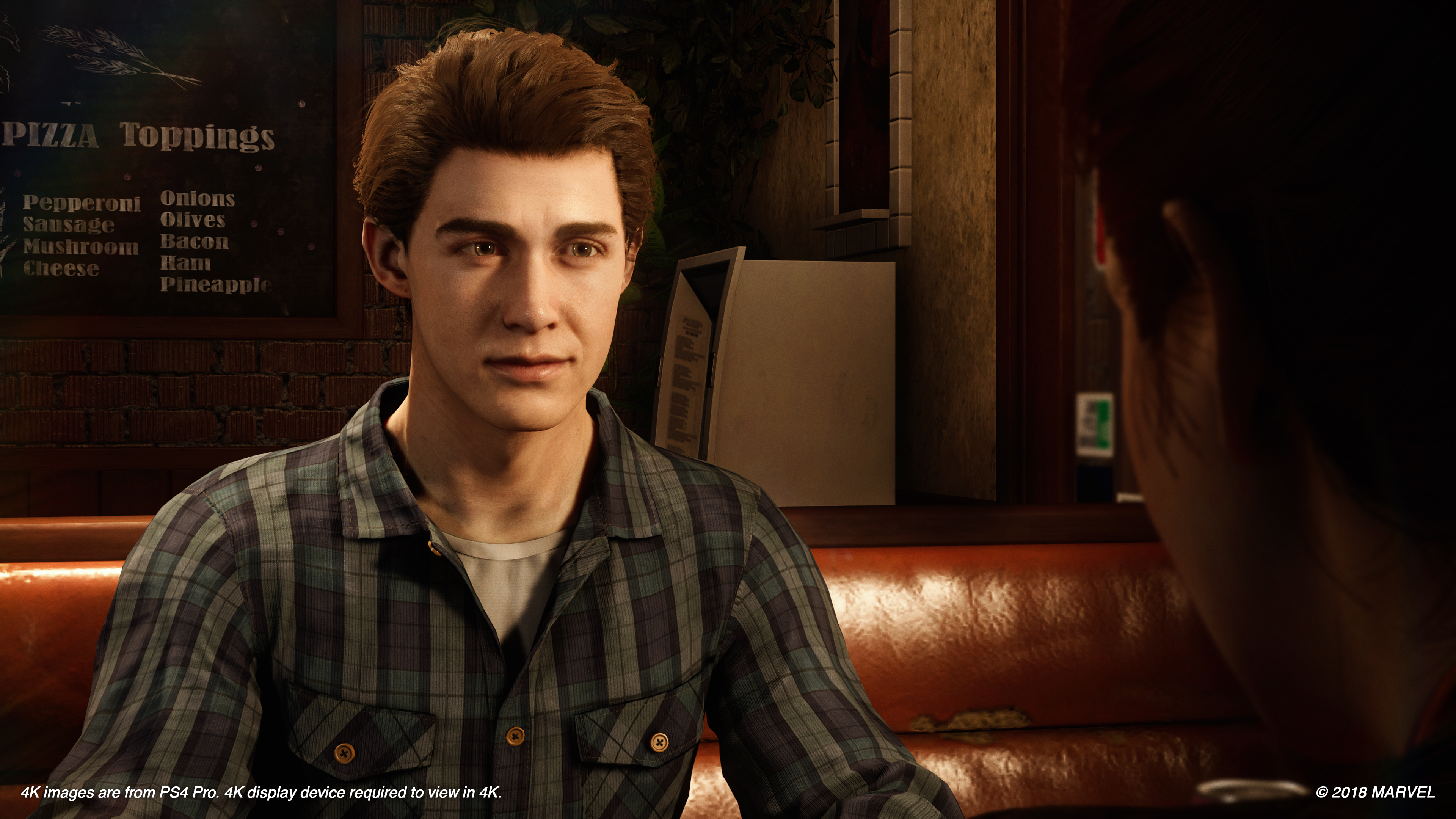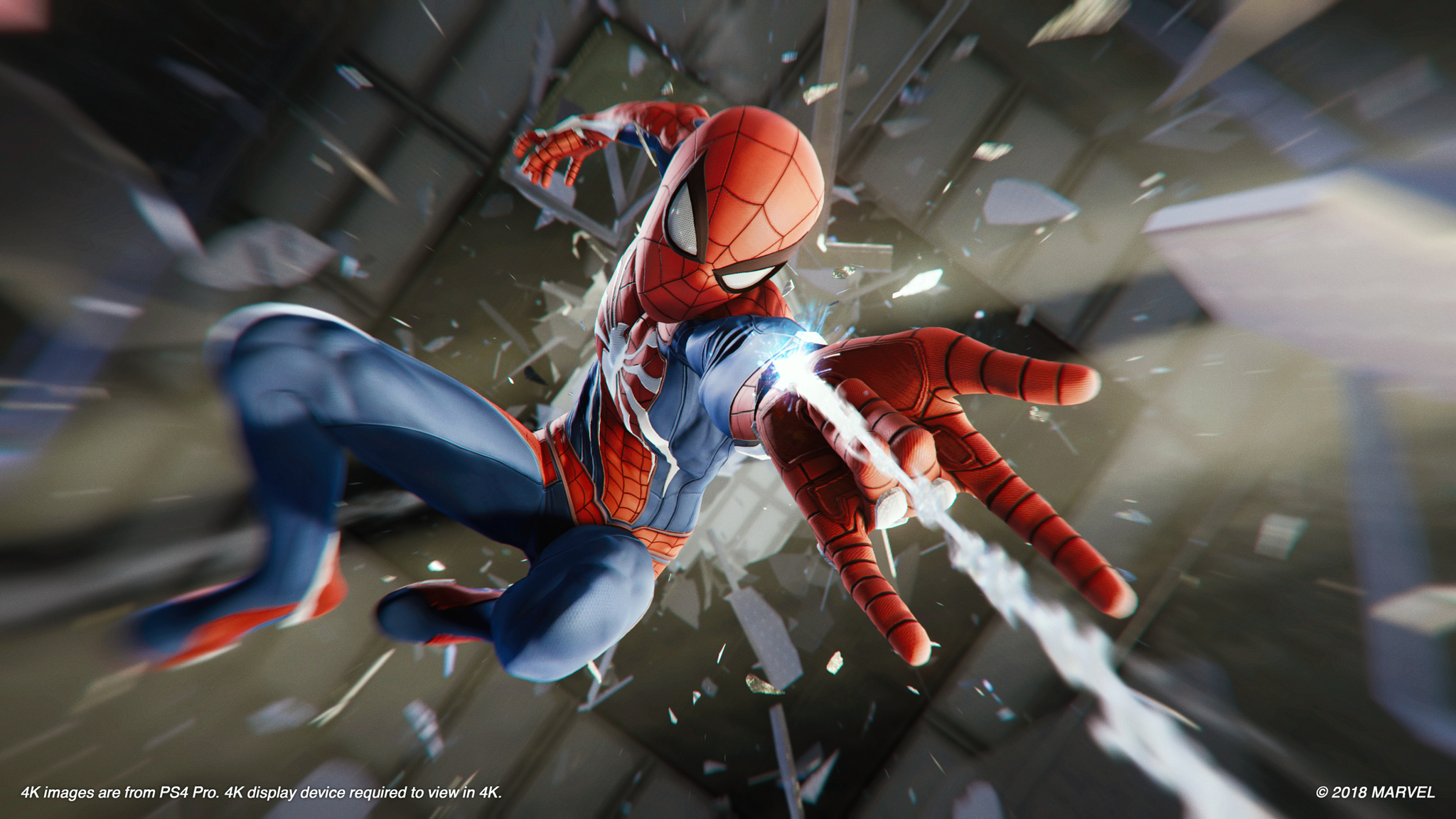‘Marvel’s Spider-Man’ Deftly Balances Mundanity With an Amazing Spider-Man (Preview)
By Brian Crecente
LOS ANGELES (Variety.com) – Criminal masterminds, thugs toting military-grade weapons, mysterious supervillains. Angry landlords, overdue bills, a sometimes worried, sometimes annoyed boss.
Insomniac’s upcoming “Spider-Man” game sets out to deftly explore the balance of neighborhood superhero and post-graduate twenty-something in a way that promises to add nuance to a game that has already shown how well it mastered the art of the spider swing and fluid, acrobatic combat.
The importance that Peter Parker’s every day, sort of humdrum life plays in the game is hammered home early on in the game’s opening moments when Parker, standing in his rundown bedroom, stops a moment to stare at a delinquency notice laying on the floor, before deciding to bound from his window to fight crime.
That message, that Parker’s fights aren’t just against bad guys, but also against the encroaching normalcy of existence, pops up again and again in the game — needing to attend a birthday party, pay the rent and go to work — providing a backdrop that gives what he does while dressed in red and blue that much more importance.
“That is absolutely the theme,” Jon Paquette, lead writer on the game, told
Variety
following an hour-and-a-half session playing “Marvel’s Spider-Man” on the 4. “In our first meeting with Marvel, they said the best Spider-Man stories are when Peter’s life and Spider-Man’s life collide.”
In the game, Peter Parker is a guy in his early twenties, recently graduated from college, looking to build his career as a talented scientist. In building out the story, Paquette said the team thought a lot about what life was like for them in their twenties.
“What were we like? We thought we could take on the world. We didn’t know we couldn’t do that, that you need help and you need to ask for help,” he said.
To help flesh out Parker’s world, players will also occasionally take control of important people in his life, like Mary Jane, very much not a damsel in distress who will develop her own abilities over the course of play. Players will also spend some time with Parker as Parker, not as Spider-Man.
The city itself, of course, plays a major role in Spider-Man’s identity as well. While the team wasn’t trying to recreate a one-to-one version of Manhattan, they did a good job of recreating key landmarks in the game and built in a couple of clever gameplay challenges to get players to explore the living world Insomniac Games created.
There are, for instance, backpacks hidden throughout the city, sort of time-capsules left by high-school Spider-Man packed with memorabilia from his life fighting crime and growing up. Not only do these backpacks offer up some fun geocaching-like challenges and fan service, but finding them rewards players with points that can be used to help create some of Spider-Man’s alternative suits . Other systems allow you to upgrade Spidey’s gadgets and abilities, essentially allowing you to customize Spidey in a way that could make each player’s take feel at least a little unique.
Early on in the game, Spidey’s unofficial police liaison lets him know that the city’s police radio towers have been knocked offline, asking him to fix them when he has time. While the idea of radio towers spread across a play map used to unlock missions certainly feels like it was inspired by “Far Cry’s” use of similar devices to unveil the map, Insomniac’s approach feels fresh. When a tower is unlocked it turns on police chatter for the area, allowing Spider-Man to hear what crimes are being committed in the vicinity of the tower and, if he feels like it, intervene in those crimes.
To increase the accuracy of Spider-Man’s mapping technology, he also is asked to go around the city taking shots of key locations in the city, like the Empire State building or the public library at Bryant Park. The photography, something you don’t have to do for a job since Parker doesn’t work for the paper anymore, is a nice throwback to Spider-Man’s early days and a great way to get players accustomed to the city.
There’s a lot of attention paid to the minutia of the city as well. People notice you as you swing or run buy and they often have something to say. How they react to Spider-Man’s presence is entirely tied to the game’s story, but also those side missions and crimes you decide to take on as a player. Sometimes they’re annoyed by you, sometimes they cheer you on. To help build that sense of a city watching Spider-Man’s every move, the game also includes J. Jonah Jameson, now the former editor of the Daily Bugle and star of his own crazy, unhinged podcast. You can listen to the podcast if you’d like as you swing through the city, hearing JJ yell at listeners and almost always attack Spidey and his actions.
All of this work, game director Ryan Smith said, helps build a foundation for the game’s story and characters. It’s all meant to come together to form a sort of remembrance of what Spidey has been up to for the past eight years.
Paquette added that one of the things the team wanted to with the game was to make it feel like it featured an authentic New York City.
“We wanted to bring the city to life as a character,” he said. “That starts with people on the street.
“A lot of effort was also put into making the fake stuff feel real. We had to create a lot of ideas. We always needed more restaurant names, clothing store names.”
Smith said in creating the city, they first placed a lot of key landmarks, making sure they all looked realistic, like Times Square and Central Park. Next, the team looked at the different heights of buildings in different parts of the city to ensure that it both looked real but also allows Spider-Man to swing through the entirety of the city.
“The art team did a terrific job of customizing the look and feel of that,” he said.
The story of the game drives through a major change in the Spider-Man universe with the arrest of a major figure. The arrest kicks off a change in the city that ignites a sort of gang war of rising crime figures. But in those first few hours of play, the story just hinted at what was to come.
It also had Parker running to get to his job in time, hurrying to be around for Aunt May’s surprise birthday party (and later explaining to her why he had to leave early) and, yes, dealing with calls from an angry landlord threatening to evict him.
Between those and other, more exciting, plot points, players can spend time deciding if they want to swing through the major moments of the game’s story and its encounters, or if they want to get lost in the living world of Spider-Man’s Manhattan. Players can take photos, hunt for backpacks, stop street crime, there seemed enough to do that a player could never return to the story and the experience would still be memorable.
Fighting with Spider-Man is reminiscent of those fantastic Rocksteady Batman games. But the almost supernatural fluidity of movement feels even more authentic when they’re performed by Spider-Man. There’s no sudden slide across too much space to deliver a blow, at least not without explanation. As Spider-Man, players can ping-pong between enemies thanks both to his reflexes and the use of copious amounts of webbing. Pulling enemies to him, or using webbing to slingshot to an enemy is a major component of fights. There’s also the use of complex takedowns and flinging nearby items into bad guys. Spider-Man’s spidey sense, which shows a small animation above his head, clues players into when to dodge, allowing him to slide between an enemies legs, or bound out of the way of harm. Once aerial combat is introduced to the mix, Spider-Man’s acrobatic combat blends with his amazing traversal system and the game finally delivers on a fully realized Spidey.
And that’s exactly what the team was aiming for when they started working on the game, from the moment they first heard they were going to be working on a game for this treasured character.
Paquette said the first thing he thought when he heard he’d be writing a true Spider-Man story for his next game was “Holy shit.”
“I’ve been a Spider-Man fan my whole life. The opportunity to work on a Spider-Man story was — oh, my god — a dream gone true. I thought this is not fan-fiction, this might see the light of day.”
“They let us do what we thought was best for the game,” he said. “Rarely did they ever try to or have to correct us.”
Smith said his excitement for working on the game was driven by the notion of what , and its experience working on titles like “Ratchet & Clank” and “Sunset Overdrive,” could bring to the property.
“The idea of applying what we know about games, about open world, about traversal, to Spider-Man and the swinging was extremely exciting,” he said.
Now, with the game completed, Paquette said he’s happy with the final result and appreciated the freedom and support the folks at Marvel gave him and the rest of the Insomniac team. The players and their experiences are the final piece of the creation, he said.
“I want people when they put down the controller and are done to say to themselves, ‘I was just Spider-Man I went through this journey as this character that was authentic and familiar, but felt new, a different take on the character. It was funny, tragic, exciting, all of the emotions that you anticipate.’ That’s what I hope they feel. “



